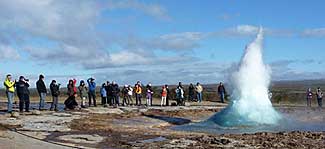Before Covid hit travelers hard - closing borders and shutting down cities, states and nations world wide - China was a fine destination for incredibly inexpensive, all inclusive tour packages. Who knows, it may be again. But until then, it is fun to revisit some of the highlights of multiple visits from 2014 to 2019.
Take the capital, Beijing, for example. It abounds with locations calling out for a visit. There’s Tiananmen Square - the largest public square in the world, said to be capable of holding a million people - but only thousands were there when we were.
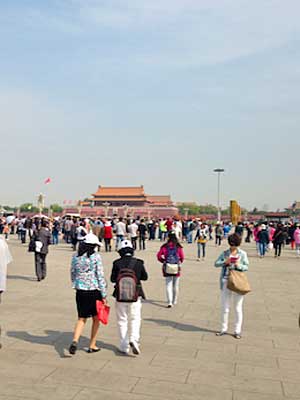
People stroll through Tiananmen Square.
The Great Hall of the People (National People’s Congress) is on the west side of the square; the National Museum is on the east.
| |
 |
|
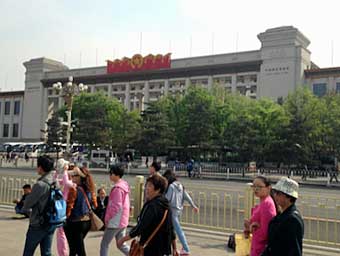 |
|
| |
The Great Hall of the People |
|
The National Museum of China |
|
Mao Zedong dominates the other two sides of the square with a mausoleum on the south end and his famous portrait emblazoned on the Gate of Heavenly Peace, the monumental entrance to the Forbidden City on the north.
| |
 |
|
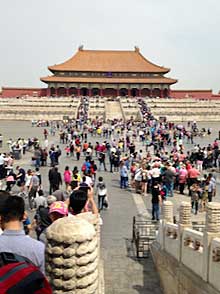 |
|
| |
Mao’s Photo over the Forbidden City entrance |
|
People in the first plaza of the Forbidden City |
|
There is much more to be seen in this historic city of over twenty-million people. A short drive from the Forbidden City is the six-century-old Temple of Heaven where Emperors from the Ming and Qing dynasties prayed for good harvests.
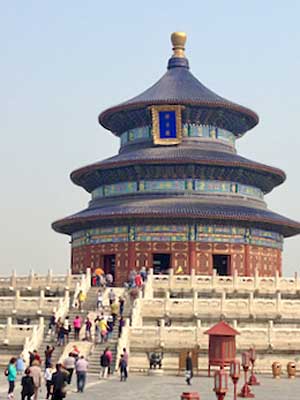
The Temple of Heaven
A longer drive will take you to the Summer Palace in Beihai Park. The Palace grounds sit on a lovely lake on which floats a marble boat built for the Empress Dowager Cixi using funds allocated for the imperial navy.
| |
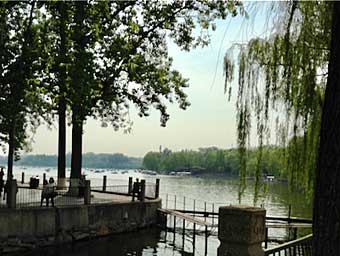 |
|
 |
|
| |
Summer Palace on the lake in Beihai Park |
|
Marble Boat built for Cixi |
|
Not all the sights of note are old, however. Beijing is a modern metropolis with sometimes astonishing modern architecture. There’s the Bird’s Nest stadium built for the 2008 Summer Olympics. Two towers connected at the top, designed by Dutch architect Rem Koolhaas, serve as the headquarters of China Central Television. The top of the tallest building in the Pangu Plaza project resembles either a dragon’s head or a flame in the wind - depending on the level of your imagination.
| |
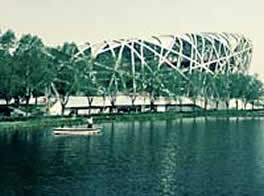
|
|
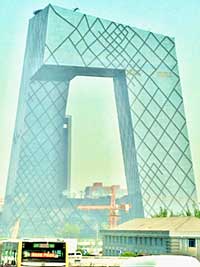 |
|
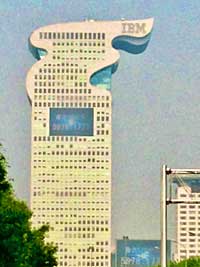 |
|
| |
Bird’s Nest Stadium built for the 2008 Summer Olympics |
|
Headquarters of China Central Television |
|
Is it a flame or a dragon head? Pangu Plaza |
|
No traveler could think of visiting Beijing without including a trip outside the city to the Great Wall. Crowds arriving by bus and car gather daily at a number of entrances - this one at Badaling draws the most.
| |
 |
|
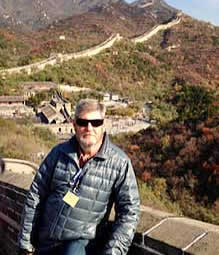 |
|
| |
Crowds at the entrance to the Great Wall |
|
The author on the wall |
|
Beijing’s literal translation is “Northern Capital.” We headed south to the city that was Chiang Kai-shek’s Capital during World War II, Chongqing. It is a huge city on the Yangtze River 250 miles up stream from the Three Gorges Dam. There we boarded a ship for a cruise down the Yangtze, through the three gorges themselves and the dam, and then on to Jingzhou which lies about 80 miles further down river as the crow files.
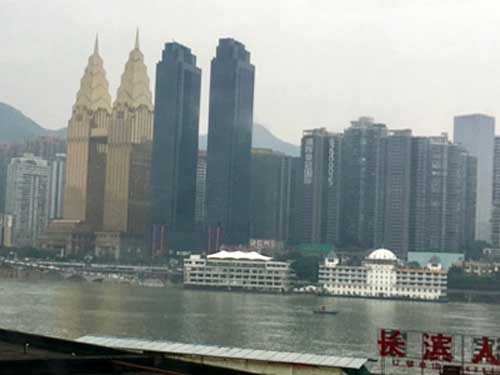
Skyline of Chongqing from the Yangtze Riverfront.
The ship stayed in Chongqing overnight so we had a chance to see the spectacular illumination the city puts on, lighting up its sky scrapers in a fashion that rivals the more famous illuminations of Shanghai.
| |
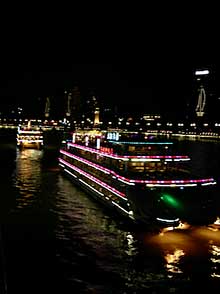 |
|
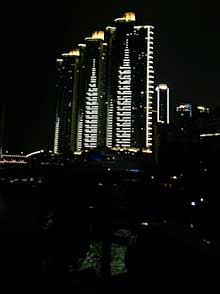 |
|
| |
Our ship stays the night in Chongqing |
|
Illuminated buildings of Chongqing at night |
|
Before our departure from Chongqing we stopped at the zoo in the old city to spend some time with the most popular attraction: Mang Zei, a female giant panda who spends her waking moments chomping down on bamboo.
Panda Mang Zei chows down
As we cruised down the Yangtze we saw pagodas, temples and other intriguing buildings along the banks,
Buildings along the Yangtze River
but it was the beauty of the gorges themselves that impressed the most. Gorge Wu, Gorge Qutang and Gorge Xiling offer spectacular views.
The Yangtze River through the gorges
At Shibaozhai (which translates as “Precious Stone Fortress”) we found a pavilion built into the side of the hill. On top is a three-story Buddhist temple which people used to reach by climbing up a chain strung from the peak to the river. But in the nineteenth century a pyramidal pagoda was built into the hill so people could walk up indoor stairways. More floors were added in the twentieth century so that now there are twelve flights to scale before you get to the three story temple. On the way up, each landing offers views of the river below.
Precious Stone Fortress Shibaozhai inside and out
We finally arrived at the dam itself. It was completed in 2012 but not filled to its planned 575 feet depth until recently. That is some 300 feet higher than the river’s natural depth. Of course, over the thousand years or more that people lived along the banks, cities and towns grew up in areas that have now been flooded. China built newer cities and towns further up the hills - 13 cities, 140 towns and over a thousand villages for the more than one million people who had to move up. The reservoir over which we have been sailing stores three and a half billion cubic feet of water in a reservoir over 300 miles long. The dam and its hydro-electric generating plant is so huge there isn’t a good place to take an all-encompassing photo - so a visitor’s center with a full model was built.

Model of Three Gorges Dam and Power Plant
To get past the dam itself, some ships use a unique Ship Elevator, but our cruise ship used the lock and dam system of five locks, each carrying multiple boats a step at a time. We all gathered at the front windows to see our entry into the first lock - you can see that they really pack the ships in.
Entering a lock and in a full lock
We stopped at a Tu Chan village near Yichang. It was built up on each side of a gorgeous canyon with a rushing stream in the middle. We hiked across a small impoundment dam, up a wooden walkway where we could see locals who were posing aboard boats in the wide spots in the creek, past working water wheels and paused in front of lovely waterfalls.
Tu Chan village in the Three Gorges Tribe
At the ancient city of Jingzhou we left the boat and stopped at the local museum for a glimpse of the corpse of a 60-year-old man by the name of Sui who was buried near here in 167 BC. So well preserved was the body that they were able to determine he died of a ruptured gastric ulcer. Buried with him were wooden figurines of servants and horses.
The Jingzhou Museum and its corpse and figurines
Of most interest to us, however, was the “Music House” with an extensive collection of ancient bells, drums and instruments. Staff at the museum performed examples of the music that would have been played on these instruments.
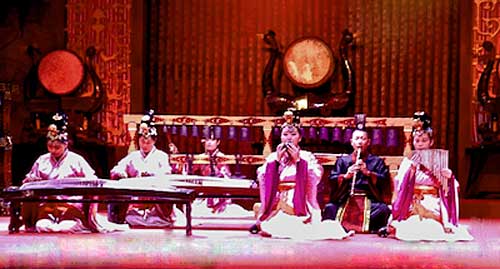
Performance at the Jingzhou Museum’s Music House
Next stop, Wuhan - now most known throughout the world as the place where the Covid-19 Pandemic began. Its eleven million people make it the most populous city in central China. Just as we had been impressed by the night illumination of the sky scrapers in Chongqing, we were delighted by the illumination in Wuhan.
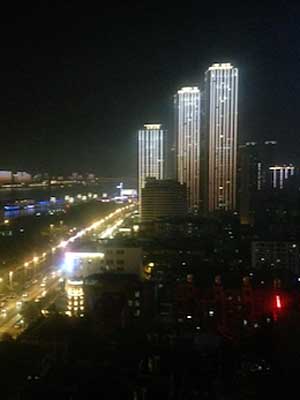
The Illumination along Wuhan’s riverfront
Here we caught a high speed train to carry us at 245 kilometers per hour (about 150 miles per hour) to Shanghai on the Pacific Coast.
Wuhan Train Station, the High Speed Train and its Speedometer reading 245 km
By the time we arrived in Shanghai it was getting dark, so we again enjoyed the illumination - this time in a boat on the Huangpu River that separates the Bund - the majestic waterfront of old Shanghai - from the sky scraping skyline of modern Pudong.
Night along Shanghai’s Bund
The amazing thing about the Pudong skyline is that less than thirty years ago it was mostly farmland. Now it is home to the 1,600 foot tall Oriental Pearl tower which was the tallest structure in China when it opened in 1994, but was overtaken by the just slightly higher World Financial Center in 2007 and the more than 2,000 feet tall Shanghai Tower that opened in 2015.
Night skyline of Pudong
By day, Pudong is equally impressive and it is still a thrill to go to the top of the Oriental Pearl where a glass floor challenges the adventurous to lie down above the ground 1,148 feet below.
Day in Pudong. The author on the floor of the Oriental Pearl observation deck
Not all the impressive architecture of Pudong is super tall. The China Art Museum, which was build for the World Expo held in Shanghai in 2010, is a striking red inverted pyramid. The Shanghai Science and Technology Museum sports a huge glass and steel globe with what I’m told is a “decorative hanging sphere representing an egg and its yoke - an important Chinese symbol.” No mention of what it symbolizes.
| |
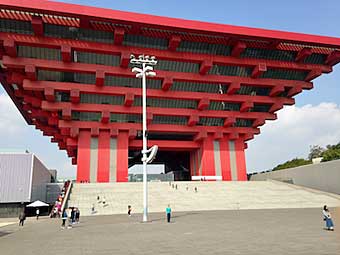 |
|
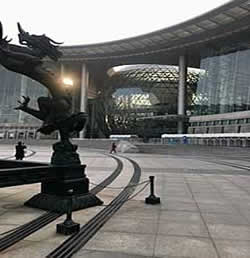 |
|
| |
China Art Museum |
|
Shanghai Science and Technology Museum |
|
Shanghai isn’t the only city in western China with fascinating things to see. Three cities in particular, along the route of the Grand Canal, are worth a visit because of their relationship to water. The thousand-mile-long Grand Canal, which connects arid Beijing and the Yellow River in the North to the Yangtze River, served the region near Shanghai. It is actually the longest artificial river in the world.
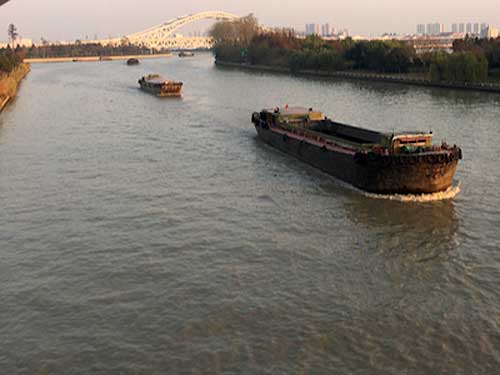
The Grand Canal at Suzhou
Suzhou, which - due to its own canals linking to the Grand Canal - calls itself the “Venice of the East,” offers boat rides or strolls along the ancient canals. Another major tourist attraction here is The Garden of the Master of the Nets with its lovely water garden.
Suzhou canal and Garden of the Master of the Nets
Wuxi is another water-oriented city along the Grand Canal. Here you can take a water-bus for a scenic cruise or stroll over the bridges.
Wuxi canals
Not all the attractions are about water. The Grand Buddha in Wuxi’s Mount Lingshan Scenic Area stands atop a 215-step stairway. The 289 feet height of the Buddha itself is quite a draw.

The Grand Buddha at Lingshan
However, even here water can be a big thing as a dancing fountains program is offered surrounding a huge mechanical sculpture of a lotus blossom which opens to reveal the baby, Sakyamuni - founder of Buddhism.
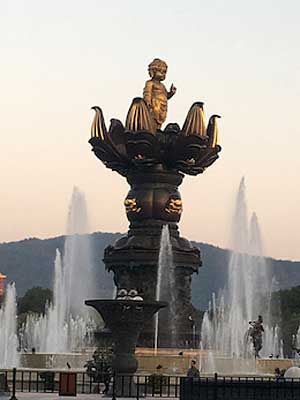
The lotus blossom revealing Sakyamuni in the fountain
With all the concentration on water, it somehow seems fitting to end this trip down memory lane with the sunset over Hangzhou’s West Lake.

Hangzhou West Lake sunset
| |
Brad Hathaway retired to live with his wife on a houseboat in Sausalito, California, after nearly two decades covering theater in Washington, D.C., on Broadway, and nationwide. He is the vice-chair of the American Theatre Critics Association’s Executive Committee. |
|
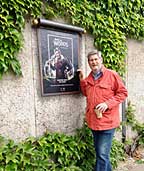 |
|
|
